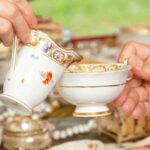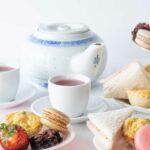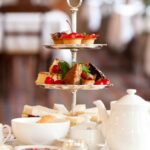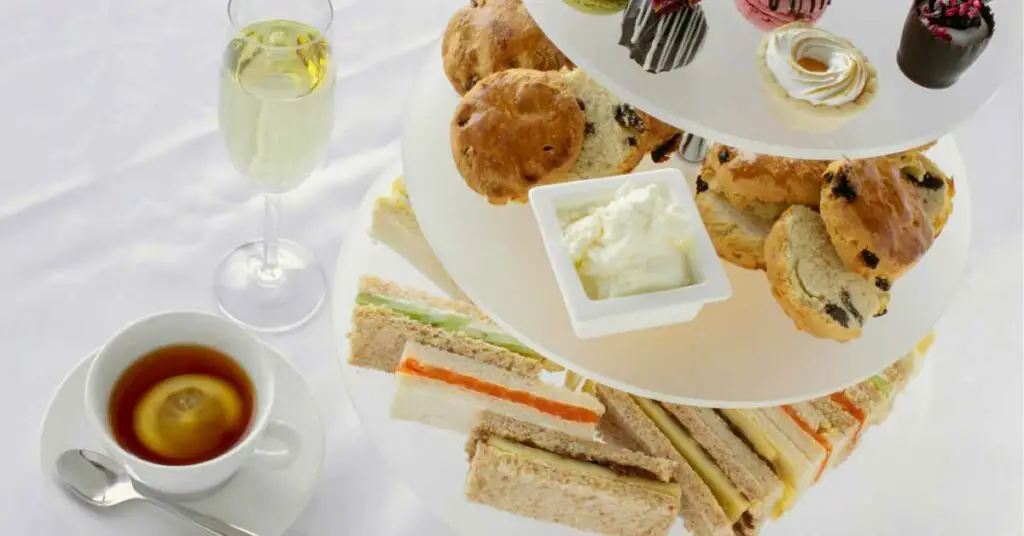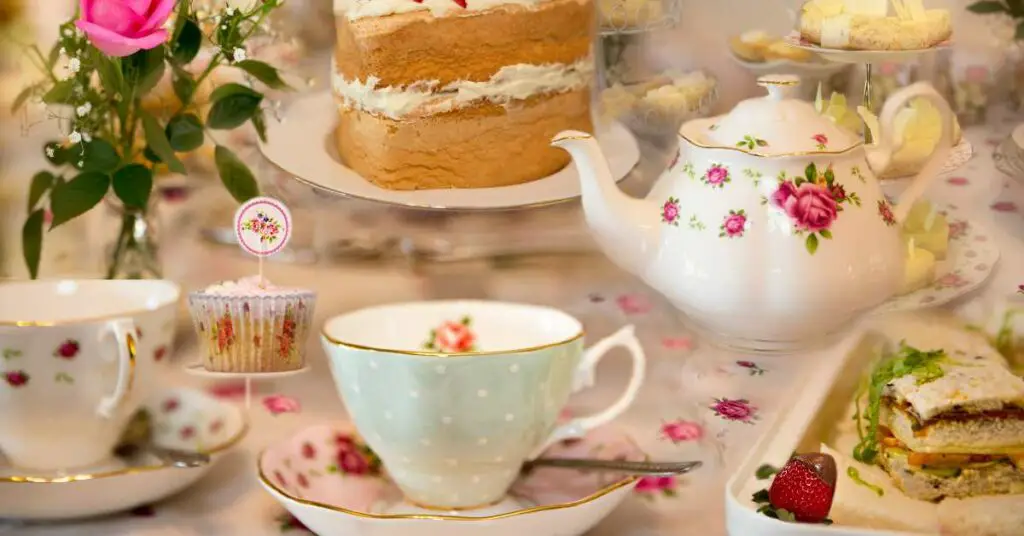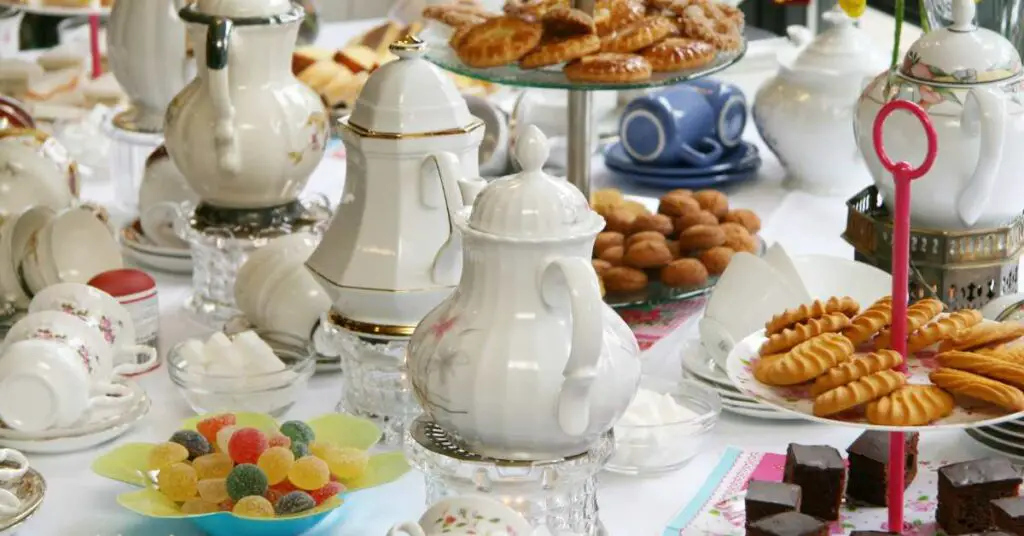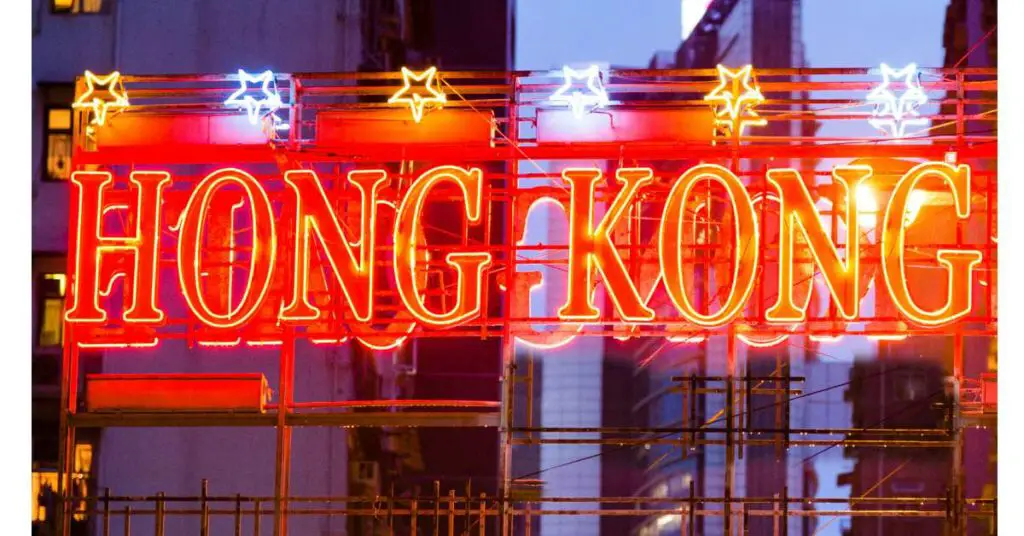All right, tea enthusiasts and curious minds, buckle up for a delightful journey into the world of “What Time is High Tea?” Grab your favorite teacup and get ready to sip on some fascinating facts!
If you’re wondering about the perfect time to indulge in this centuries-old tradition, you’ve come to the right place.
High tea is typically served in the late afternoon, around 5 pm to 7 pm. It is a delightful tradition that offers a substantial meal after a day’s work, making it a perfect time to enjoy savory and sweet treats paired with a cup of tea.
High tea, my tea-loving amigos, is not your average teatime affair. Oh no! It’s not just about dainty cups and pinkies in the air.
We’re diving deep into the historical roots, cultural significance, and all the fun that comes with this delectable experience.
But before we steep ourselves into the juicy details, let’s clear the confusion – high tea and afternoon tea are two different tea buddies!
Don’t worry; we’ll decipher their differences and serve them up on a silver platter for you.
So, join me as we embark on this tea-rrific adventure, where we’ll explore the time-honored customs, the royal touch, and even how high tea has evolved from its humble beginnings.
Get ready to raise your tea spirits and find out the perfect time to indulge in this splendid tea tradition!
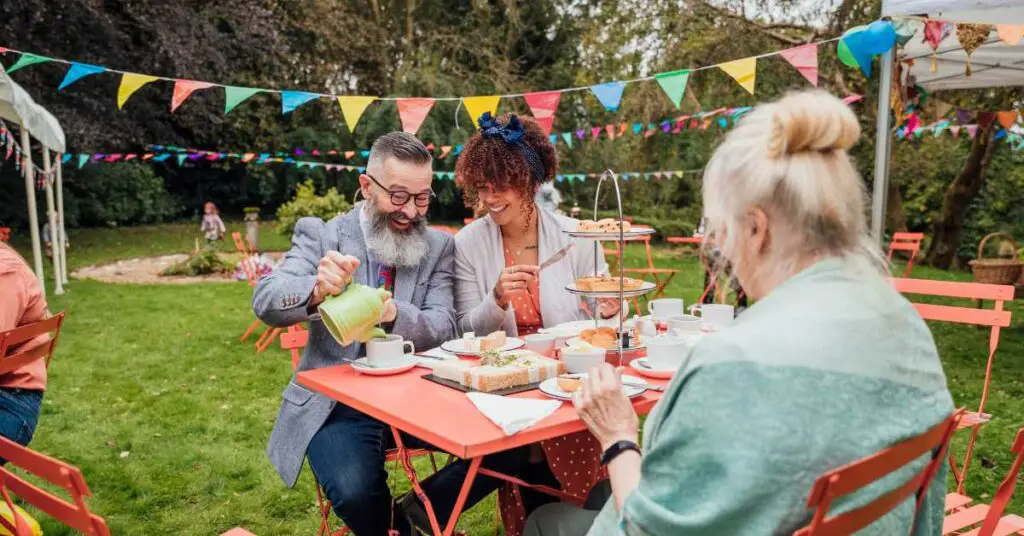
What is High Tea?
Ah, the million-dollar question! High tea, my tea-loving comrades, is a British tradition that goes way back to the 18th and 19th centuries.
Picture this: hardworking folks in the Industrial Revolution era, looking forward to a well-deserved break after a long day of toiling away in factories. High tea was their saving grace – a hearty and satisfying meal to refuel their engines.
But hold on! Don’t confuse it with its fancy cousin, afternoon tea. While afternoon tea is all about delicate sandwiches and sweet pastries, high tea is a robust spread of heartier fare.
Think savory pies, meaty dishes, and cakes that could make your taste buds dance a jig.
High tea earned its name from the tall tables (also known as “high” tables) it was served on. So, it’s not just a feast of flavors; it’s a bit of history on your plate!
Now that we’ve got the basics down, let’s delve deeper into the origins and unravel the cultural tapestry of high tea. Time to sip and savor the tea-licious tales of old!
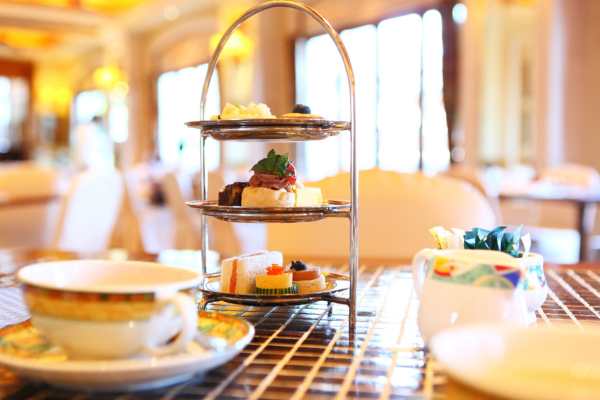
What Time is High Tea?
Ah, the age-old question that can make even the most seasoned tea enthusiasts scratch their heads! The timing of high tea has evolved over the centuries, but its historical roots give us a clue to its traditional schedule.
Picture this – back in the Victorian era, when high tea originated, it was typically served around 6 pm. After a grueling day of work, people would gather around the table for a scrumptious spread to rejuvenate their spirits.
Fast forward to today, and you’ll find that the timing of high tea varies like the flavors of tea itself! Different regions boast their unique preferences – from mid-afternoon indulgence to early evening soirées.
And let’s not forget the contemporary twist on high tea schedules; now you can find weekend brunch editions and even twilight tea parties under the stars!
What influences these high tea times, you ask? Well, it’s a delightful dance between cultural customs, working hours, and social preferences.
So, whether you’re savoring it in the afternoon sun or under the twinkling stars, high tea is always served with a dash of history and a sprinkle of modern flair!
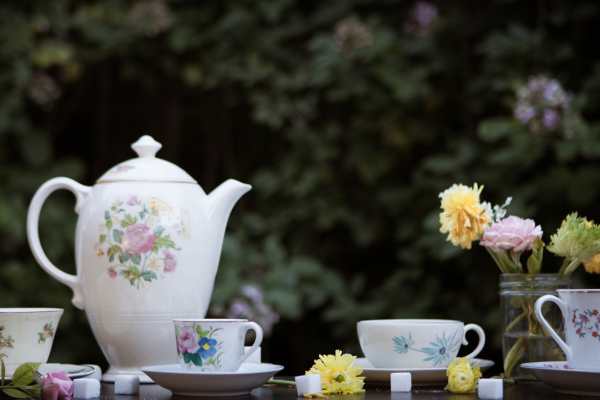
The Traditional Timing of High Tea: Historical Background
Let’s step back in time to the industrial hustle and bustle of the 18th and 19th centuries, where high tea got its humble beginnings.
Picture the hardworking working-class heroes, returning home after a laborious day, craving a hearty meal to recharge their spirits. Voilà! High tea was born, served around early evening hours, usually between 5 pm and 7 pm.
The timing of high tea was directly influenced by the working class’s needs. After a long day of physical toil, a substantial spread was in order – none of those dainty finger sandwiches here! It was all about comfort and filling bellies to the brim.
So, raise your teacups to the history of high tea, where timing was everything, and hearty meals were the order of the day!
Regional Variations in High Tea Timings
Now that we’ve got a taste of high tea’s historical roots, let’s globe-trot a bit and explore how different cultures have their unique spin on tea timings.
From the elegant streets of London to the bustling markets of Asia, high tea adapts like a chameleon to its surroundings.
Climate, time zones, and cultural norms all play a part in shaping high tea schedules. In tropical regions, high tea might be a delightful afternoon escape to beat the heat.
In colder climes, it could be a cozy twilight gathering to ward off the chill.
And let’s not forget the global tea party; as time zones shift, high tea hosts around the world cater to guests from sunrise to sunset.
As we journey across continents, we discover a tea-rrific tapestry of high tea times. From the traditional elegance of England’s “afternoon tea” to Japan’s “ocha no jikan” (tea time), each region brings its cultural charm to the table.
So, wherever your tea adventures take you, remember that high tea timing is all about savoring the flavors of diversity!
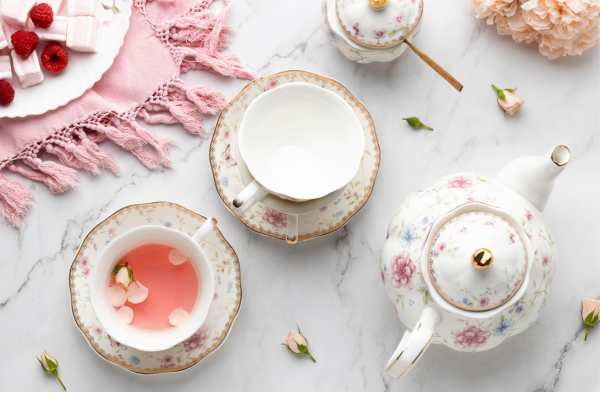
Factors Influencing High Tea Times in Different Cultures
Tea is not just a beverage; it’s a cultural affair that dances to the beats of different customs and traditions worldwide. When it comes to high tea, each culture brings its own unique flavor to the timing of this delightful ritual.
Cultural factors
Cultural factors play a major role in influencing the preferred timing of high tea in various regions. In countries like England and India, where tea holds immense cultural significance, high tea is often scheduled to align with religious practices or family gatherings.
Work schedules
Work schedules also have their say in the high tea schedule. In bustling cities, high tea might be a quick escape from office hustle during weekdays. Meanwhile, in laid-back countryside settings, it might be a leisurely weekend activity.
special occasions
Let’s not forget those special occasions! High tea gets dressed up to the nines for celebrations like weddings, birthdays, or festive gatherings, where timing may vary to accommodate the merry-making.
So, whether it’s a tranquil afternoon break or an evening affair filled with laughter, high tea’s timing whispers tales of culture, customs, and cherished moments!
The Role of Seasons in High Tea Timings
As the seasons change, so does the delightful dance of high tea! The transition from spring blossoms to winter wonderlands brings a whole new flavor to this timeless tradition.
High tea menus gracefully sway with the seasons, incorporating fresh ingredients and seasonal delights.
In spring, delicate pastries and floral-infused teas take center stage, while summer sees an array of refreshing treats and iced teas to beat the heat.
As autumn leaves fall, rich flavors of spiced cakes and harvest-inspired dishes grace the high tea table.
And when winter knocks on the door, warm scones and heartwarming teas wrap you in cozy comfort.
Seasonal themes breathe life into high tea events, turning ordinary gatherings into magical affairs. Blossom-filled tea parties in spring, beachy-themed teas in summer, rustic autumnal feasts, and twinkling winter wonderlands – the possibilities are as endless as the seasons themselves!
If you’re planning a high tea gathering, let the seasons be your guide. Embrace the flavors of nature, decorate with seasonal charm, and serve up a seasonal symphony to make your high tea an unforgettable celebration of all things fresh and fabulous!

Conclusion
In this tea-rrific journey, we’ve dived into the delightful world of “What Time is High Tea?” From its humble origins as a working-class meal to the elegant affair it is today, high tea’s historical roots have influenced its timing and customs over the centuries.
We explored the regional variations that add a splash of diversity to high tea schedules, adapting to different cultures, climates, and time zones.
As we sipped our way through the seasons, we discovered the magic of high tea’s ever-changing menu, dancing gracefully with the rhythm of nature. From spring’s blooming delights to winter’s cozy comforts, each season brings its unique flavors to the table.
High tea isn’t just a British affair; it’s a cultural celebration that spans the globe. Wherever you are, whoever you’re with, high tea welcomes all to its tea party.
So, don’t fret about the timing – embrace the experience, for high tea is an enchanting fusion of culture, customs, and culinary delights.
Whether you’re sipping under the sun, gazing at the stars, or savoring a sunrise brew, high tea invites you to relish the flavors of life and savor moments of togetherness.
So, dear readers, let’s raise our teacups and toast to the timeless tradition of high tea. Bon appétit and happy tea-sipping, wherever your tea journey takes you!
Frequently Asked Questions
What time is afternoon tea?
Afternoon tea is typically served between 3 pm and 5 pm. It is a delightful tradition that originated in Britain during the 19th century. The timing of afternoon tea perfectly bridges the gap between lunch and dinner, offering a moment of relaxation and indulgence.
What is the dress code for high tea?
The dress code for high tea is generally smart-casual or semi-formal. It’s an occasion to dress up a bit and show a touch of elegance, but it’s not overly formal or strict. For ladies, nice dress, skirt or trousers paired with a blouse or a stylish top would be suitable. Men can opt for dress slacks or trousers, a collared shirt, and perhaps a blazer.
It’s always a good idea to check with the venue if they have any specific dress code requirements. Ultimately, the goal is to feel comfortable, refined, and ready to enjoy the delightful experience of high tea.
Do you eat high tea with hands?
Yes, it is perfectly acceptable to eat certain items during high tea with your hands. Finger foods such as sandwiches, scones, and pastries are typically meant to be enjoyed by hand. When presented with finger sandwiches, it’s customary to pick them up and take dainty bites.
Scones are often served with clotted cream and jam, and it’s customary to use your hands to spread the toppings onto the scones. However, for certain delicate pastries or cakes, it’s more appropriate to use a fork or spoon. High tea strikes a balance between elegance and comfort, so feel free to indulge in those delectable treats with your fingers!

